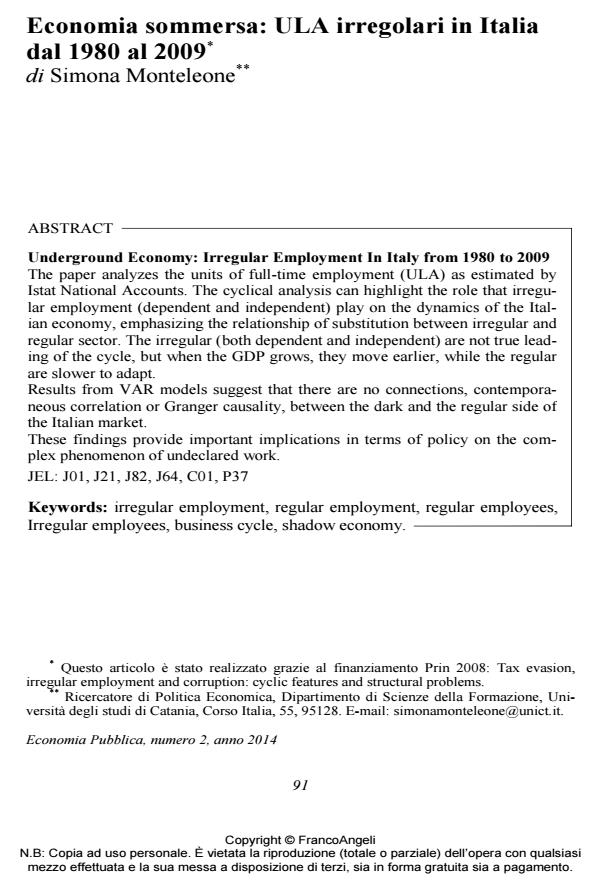Economia sommersa: ULA irregolari in Italia dal 1980 al 2009
Titolo Rivista ECONOMIA PUBBLICA
Autori/Curatori Simona Monteleone
Anno di pubblicazione 2014 Fascicolo 2014/2
Lingua Italiano Numero pagine 33 P. 91-123 Dimensione file 1336 KB
DOI 10.3280/EP2014-002004
Il DOI è il codice a barre della proprietà intellettuale: per saperne di più
clicca qui
Qui sotto puoi vedere in anteprima la prima pagina di questo articolo.
Se questo articolo ti interessa, lo puoi acquistare (e scaricare in formato pdf) seguendo le facili indicazioni per acquistare il download credit. Acquista Download Credits per scaricare questo Articolo in formato PDF

FrancoAngeli è membro della Publishers International Linking Association, Inc (PILA)associazione indipendente e non profit per facilitare (attraverso i servizi tecnologici implementati da CrossRef.org) l’accesso degli studiosi ai contenuti digitali nelle pubblicazioni professionali e scientifiche
The paper analyzes the units of full-time employment (ULA) as estimated by Istat National Accounts. The cyclical analysis can highlight the role that irregular employment (dependent and independent) play on the dynamics of the Italian economy, emphasizing the relationship of substitution between irregular and regular sector. The irregular (both dependent and independent) are not true leading of the cycle, but when the GDP grows, they move earlier, while the regular are slower to adapt. Results from VAR models suggest that there are no connections, contemporaneous correlation or Granger causality, between the dark and the regular side of the Italian market. These findings provide important implications in terms of policy on the complex phenomenon of undeclared work.
Parole chiave:Keywords: irregular employment, regular employment, regular employees, Irregular employees, business cycle, shadow economy.
Jel codes:J01, J21, J82, J64, C01, P37
Simona Monteleone, Economia sommersa: ULA irregolari in Italia dal 1980 al 2009 in "ECONOMIA PUBBLICA " 2/2014, pp 91-123, DOI: 10.3280/EP2014-002004